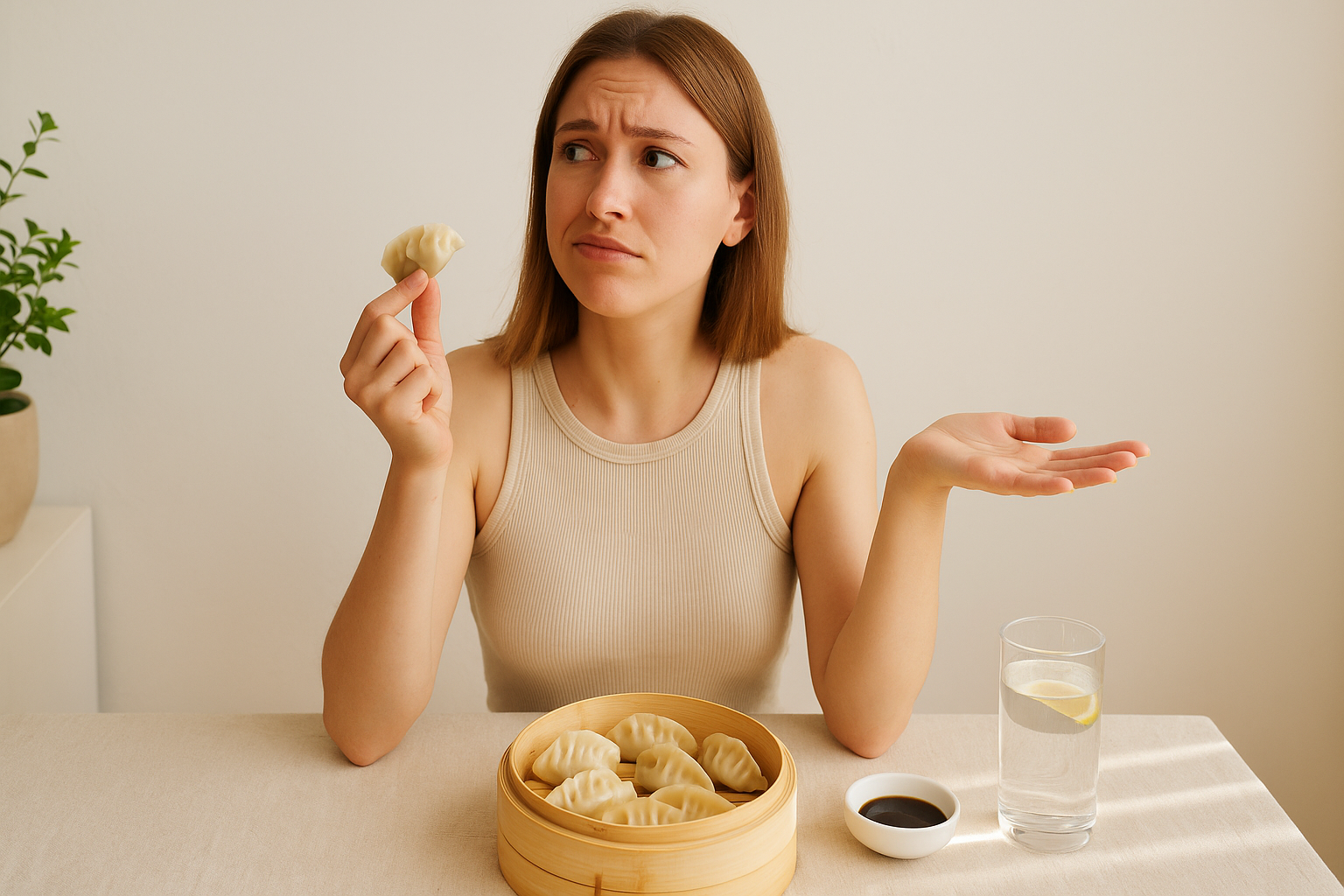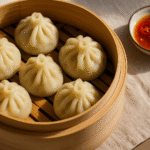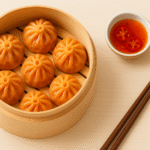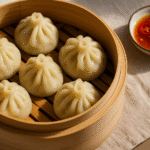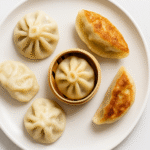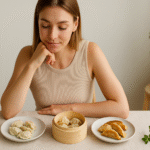Dumplings have a way of bringing people together. Whether they’re steamed, pan-fried, or boiled, there’s something comforting about folding dough around a flavorful filling and sharing it at the table. But as dumplings become more popular — and more readily available in restaurants, markets, and freezer aisles — one question keeps popping up: are dumplings healthy?
The answer isn’t black and white. Like most foods, it depends on what’s inside, how it’s cooked, and how much you eat. Let’s unpack what makes dumplings both comforting and, when done right, surprisingly balanced.
What’s Really Inside a Dumpling
A traditional dumpling is made from three simple components: a wrapper, a filling, and a cooking method. The wrapper is typically made from refined wheat flour and water — light, but still a source of carbohydrates. The filling is where the real variation comes in. When dumplings are packed with lean proteins like chicken, shrimp, or tofu and balanced with vegetables, they can be nutrient-dense and satisfying. But when they’re loaded with fatty meats or sodium-heavy sauces, their nutritional profile changes quickly.
Finally, how dumplings are cooked can make a huge difference. Steamed dumplings are generally the healthiest, as they retain nutrients and use no added fat. Boiled dumplings remain relatively light, while pan-fried dumplings (or potstickers) soak up oil during cooking — adding extra calories and fat.
Nutrition Facts: What’s in a Serving of Dumplings
On average, a serving of five steamed pork dumplings contains around 200 to 220 calories, 12 grams of protein, 22 grams of carbohydrates, and 8 grams of fat. Pan-fried versions rise to 250 to 280 calories, while vegetable dumplings drop slightly lower, around 160 to 180 calories per serving. Shrimp dumplings — often steamed — are a good lean option at 180 to 200 calories, with about 14 grams of protein.
So, are dumplings unhealthy? Not necessarily. In fact, they can fit easily into a balanced diet. What matters is portion size and cooking method. A full meal might include 10 to 12 dumplings — doubling your calorie count — so moderation is key. If you’re counting calories, choose steamed or boiled dumplings and pair them with fresh vegetables or broth-based soups to keep things light.
Are Dumplings Good for Weight Loss?
The short answer is yes — dumplings can fit into a healthy eating plan, especially if you focus on moderation and smart cooking choices. Stick to six to eight dumplings per meal, choose steaming over frying, and add fiber with greens like bok choy, cabbage, or spinach on the side. Opt for fillings made with shrimp, chicken, tofu, or mushrooms for a leaner protein source.
Sauces are where many people go overboard. Soy sauce, chili oil, and other condiments can add hidden sodium and calories. Try using smaller portions or lighter alternatives like ponzu or rice vinegar.
As we mentioned in The Surprising Health Benefits of Eating Dumplings — Yes, Really, dumplings can actually support balanced eating habits. They encourage portion control, are easy to customize with nutrient-dense fillings, and can even support mindful eating — when enjoyed slowly and intentionally.
Are Steamed Dumplings Healthier Than Fried?
When it comes to nutrition, steamed dumplings are the clear winner. They preserve the natural flavors of the filling and require no added oil, keeping calorie counts lower and fats minimal. In comparison, pan-fried dumplings can contain 50–70 more calories per piece depending on how much oil they absorb during cooking.
If you love the crispy texture of fried dumplings, consider using the half-steam, half-fry method. This technique gives you that golden crust with less oil and a lighter overall result. You can learn how to perfect this method in our detailed guide, The Secret to Perfect Pan-Fried Dumplings.
Can Dumplings Be High in Protein?
Yes — especially if they’re made with protein-rich fillings like shrimp, chicken, or tofu. A serving of steamed shrimp dumplings can provide around 14 grams of protein, making it comparable to a traditional breakfast of eggs and toast. For even more balance, pair your dumplings with sides that add extra protein and nutrients, such as edamame, miso soup, or a light tofu salad.
Are Dumplings Fattening?
The word fattening is often misunderstood. Dumplings themselves aren’t inherently fattening — what matters is how they’re prepared and how often you eat them. A few pan-fried dumplings as a weekend treat won’t derail your health goals, but a dozen fried dumplings every night might.
As a general rule:
Steamed for the body, pan-fried for the soul.
Both can exist in a healthy lifestyle — balance is everything.
How to Make Dumplings Healthier at Home
The best part about dumplings is that you can easily make them healthier when preparing them yourself. Use whole wheat wrappers instead of white flour for added fiber, and mix your fillings with vegetables like mushrooms, cabbage, spinach, or kale for extra nutrients. If you’re using meat, choose lean cuts or blend with tofu to reduce fat.
Steam or air-fry instead of deep-frying, and make your own dipping sauce using light soy, rice vinegar, and chili for a fresh, lower-sodium flavor.
For step-by-step help, follow our practical guide How to Make Perfect Dumplings: Common Mistakes and Expert Tips. You’ll learn how to fold, seal, and cook dumplings that are both delicious and nourishing.
The Bottom Line
So, are dumplings healthy? They can be — and often are, when made with care.
When steamed, portioned properly, and filled with a mix of lean protein and vegetables, dumplings are a wholesome, satisfying meal that provides a good balance of protein, carbohydrates, and micronutrients. They’re not superfoods, but they’re certainly not junk food either.
Like all comfort foods, their healthiness depends on how you prepare and enjoy them. With the right ingredients, dumplings can be both nourishing and comforting — a perfect symbol of balanced eating.
